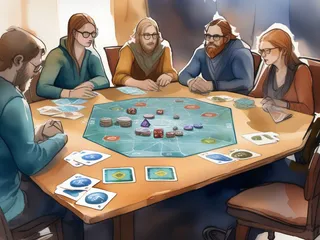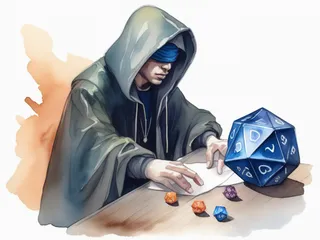Ever walked into a retrospective and immediately spotted the person frantically scribbling diagrams in the corner while someone else dominates the conversation? Or noticed how one team member always finds the potential pitfalls while another sees nothing but opportunity? Welcome to the beautiful chaos of agile team dynamics. Understanding these personality types isn't just helpful—it's essential for any Scrum Master who wants to facilitate effectively and unlock their team's full potential.
Why Personality Awareness Matters in Agile
Every personality trait is a gift. The challenge isn't changing people—it's learning when and how to leverage each unique perspective. As a Scrum Master, your job isn't to eliminate these differences but to orchestrate them like a conductor with a diverse symphony.
I've facilitated hundreds of Scrum events, and these 14 personality types show up consistently across teams, industries, and experience levels. Here's how to identify them, work with them, and turn their natural tendencies into team superpowers.
The 14 Personality Types in Detail
1. The Watcher

The Scenario: During sprint planning, they sit quietly taking everything in. They nod thoughtfully but rarely speak up unless directly asked.
What it's like to work with them: Watchers are your hidden gems. They process information deeply and often have the most insightful observations—once you get them talking. They're excellent listeners who pick up on team dynamics others miss.
| Strengths | Weaknesses |
|---|---|
| Deep processing and thoughtful insights | May withhold valuable perspectives |
| Excellent listeners and observers | Can appear disengaged to vocal team members |
| Notice subtle team dynamics | Might not speak up about important issues |
| Rarely contribute to meeting noise | May feel overlooked or undervalued |
Scrum Master Strategy:
- Direct engagement: "Sarah, I'd love to hear your thoughts on this user story."
- Safe spaces: Create small breakout sessions where they're more comfortable speaking
- Written input: Use anonymous feedback tools or written exercises
- Pre-meeting prep: Give them the agenda ahead of time so they can formulate thoughts
- Acknowledge contributions: When they do speak, highlight the value of their input
2. The Energizer

The Scenario: They have opinions on everything and aren't shy about sharing them. In daily standups, their updates somehow become team-wide discussions.
What it's like to work with them: Energizers bring energy and aren't afraid to tackle difficult topics. They can jumpstart stalled conversations and often voice what others are thinking. The challenge is ensuring everyone gets heard.
| Strengths | Weaknesses |
|---|---|
| High energy and engagement | Can dominate conversations |
| Willing to address difficult topics | May inadvertently silence quieter members |
| Often voice shared concerns | Can derail focused discussions |
| Natural discussion starters | Might not notice others want to contribute |
Scrum Master Strategy:
- Time boxing: "Great point, John. Let's get two more perspectives and then move forward."
- Redirect energy: Channel their enthusiasm into facilitating discussions for others
- Visual cues: Use hand signals or timers to manage speaking time
- Round-robin techniques: Structured approaches that ensure everyone speaks
- Private coaching: Help them recognize their impact on team dynamics
3. The Skeptic
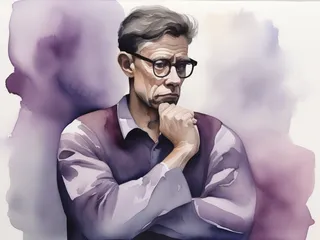
The Scenario: When the team gets excited about a new process or tool, they're the first to ask, "But what if this doesn't work?" They question assumptions and challenge decisions.
What it's like to work with them: Skeptics are your quality assurance for ideas. They prevent groupthink and ensure decisions are thoroughly vetted. While they can slow things down, they save teams from costly mistakes.
| Strengths | Weaknesses |
|---|---|
| Critical thinking and risk identification | Can appear negative or resistant |
| Prevents groupthink and bad decisions | May slow down decision-making |
| Asks important "what if" questions | Can demoralize optimistic team members |
| Ensures thorough consideration of options | Might resist necessary changes |
Scrum Master Strategy:
- Reframe contributions: "Great catch, Mike. You're helping us identify risks early."
- Dedicated time: Allocate specific time for risk analysis and concerns
- Evidence-based responses: Address their concerns with data and examples
- Balance perspective: Pair them with optimists for comprehensive planning
- Channel skepticism: Direct their questioning toward process improvement
4. The Interruptor

The Scenario: Someone's mid-sentence explaining a technical challenge when they jump in with, "Oh, I had that same issue last week!" The original speaker never finishes their thought.
What it's like to work with them: Interruptors are usually enthusiastic and want to help immediately. Their eagerness to contribute is valuable, but their timing disrupts flow and can frustrate team members.
| Strengths | Weaknesses |
|---|---|
| Enthusiastic and eager to help | Disrupts others' thought processes |
| Quick to make connections | Can appear disrespectful or impatient |
| High engagement in discussions | May miss important details by jumping ahead |
| Often has relevant experiences to share | Creates fragmented conversations |
Scrum Master Strategy:
- Speaking tokens: Physical objects that indicate who has the floor
- Parking lot technique: "Hold that thought, we'll come back to it"
- Clear facilitation rules: Establish and enforce speaking protocols
- Channel enthusiasm: Give them specific roles like timekeeper or note-taker
- Private feedback: Help them understand the impact of interrupting
5. The Realist

The Scenario: During sprint planning, while others are estimating a complex feature, they're already listing all the ways it could fail. "This is going to be a disaster," they mutter.
What it's like to work with them: Realists are your early warning system. They see problems before they happen and force teams to plan for reality instead of best-case scenarios. The challenge is maintaining team morale.
| Strengths | Weaknesses |
|---|---|
| Realistic risk assessment | Can demoralize team and stakeholders |
| Prevents over-optimistic planning | May create self-fulfilling prophecies |
| Identifies potential blockers early | Can resist trying new approaches |
| Grounds team in reality | Might focus too much on what won't work |
Scrum Master Strategy:
- Structured risk analysis: Give them formal roles in risk identification
- Balance with solutions: "What would need to be true for this to succeed?"
- Acknowledge value: "Thanks for helping us plan more realistically"
- Pair strategically: Team them with optimists for balanced perspectives
- Focus on mitigation: Channel their concerns into contingency planning
6. The Storyteller

The Scenario: You ask about yesterday's deployment issue, and suddenly you're hearing about their college internship, a similar bug from 2019, and their grandmother's advice about persistence.
What it's like to work with them: Storytellers bring context and human connection to technical discussions. Their stories often contain valuable lessons and help team bonding. The trick is keeping sessions on track.
| Strengths | Weaknesses |
|---|---|
| Brings context and historical perspective | Can derail focused discussions |
| Excellent at team bonding and rapport | May consume too much meeting time |
| Makes abstract concepts relatable | Stories might not always be relevant |
| Helps with knowledge sharing | Can lose audience attention |
Scrum Master Strategy:
- Time boundaries: "That's a great story. Can you give us the two-minute version?"
- Relevance check: "How does this connect to our current challenge?"
- Designated story time: Create specific opportunities for sharing experiences
- Extract lessons: "What's the key takeaway from that experience?"
- Use their gift: Have them share stories during team building or retrospectives
7. The Optimist

The Scenario: The deployment failed, the client is unhappy, and the deadline moved up. They cheerfully announce, "Well, at least now we know what doesn't work! This is a great learning opportunity!"
What it's like to work with them: Optimists are the team's emotional stabilizers. They maintain morale during difficult times and help teams see possibilities instead of just problems. They might miss legitimate concerns in their enthusiasm.
| Strengths | Weaknesses |
|---|---|
| Maintains positive team morale | May overlook serious problems |
| Sees opportunities in challenges | Can appear out of touch with reality |
| Encourages innovation and risk-taking | Might not adequately plan for obstacles |
| Helps team recover from setbacks | Can minimize others' legitimate concerns |
Scrum Master Strategy:
- Reality checks: Pair them with skeptics for balanced assessment
- Acknowledge emotions: "I love your positive energy. Let's also address these concerns."
- Channel optimism: Have them lead recovery efforts after setbacks
- Balance perspectives: Ensure problems are fully explored before moving to solutions
- Leverage for change: Use their enthusiasm to drive adoption of new practices
8. The Analyst

The Scenario: During retrospective, instead of discussing feelings about the sprint, they present a detailed spreadsheet showing velocity trends, defect rates, and correlation analysis.
What it's like to work with them: Analysts bring rigor and evidence to decision-making. They prevent teams from making emotional choices and ensure improvements are measurable. They can slow down fast-moving discussions with their need for data.
| Strengths | Weaknesses |
|---|---|
| Evidence-based decision making | Can slow down time-sensitive decisions |
| Identifies trends and patterns | May miss emotional/human factors |
| Ensures accountability with metrics | Can overwhelm team with too much data |
| Brings objectivity to discussions | Might delay action while gathering data |
Scrum Master Strategy:
- Prepare data in advance: Give them metrics to analyze before meetings
- Time-box analysis: "Let's spend 10 minutes on the data, then decide"
- Balance with intuition: "What does the data tell us, and what does our gut say?"
- Leverage their skills: Have them track team improvement metrics
- Simplify presentations: Help them distill data into actionable insights
9. The Dreamer

The Scenario: During backlog refinement, while others are focused on the next sprint's user stories, they're sketching out a revolutionary feature that could transform the entire product—in about two years.
What it's like to work with them: Dreamers bring vision and innovation. They see beyond current constraints and inspire teams to think bigger. The challenge is grounding their ideas in current realities and timelines.
| Strengths | Weaknesses |
|---|---|
| Innovative thinking and vision | Ideas may be impractical or unrealistic |
| Inspires team with possibilities | Can lose focus on immediate priorities |
| Excellent for brainstorming sessions | May not consider technical constraints |
| Brings creativity to problem-solving | Can frustrate practical team members |
Scrum Master Strategy:
- Dedicated brainstorming time: Create specific spaces for big-picture thinking
- Ground in reality: "That's an amazing vision. What would the first step look like?"
- Capture ideas: Keep an "idea parking lot" for future consideration
- Pair with implementers: Team them with detail-oriented members
- Use for long-term planning: Include them in product roadmap discussions
10. The Timekeeper
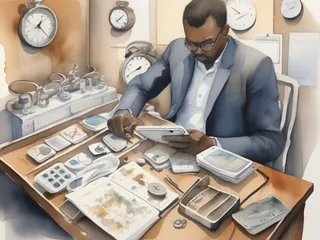
The Scenario: Three minutes into daily standup, they're tapping their watch. "We've got 12 more people to go and only 7 minutes left," they announce, checking their phone for the third time.
What it's like to work with them: Timekeepers are essential for maintaining meeting discipline and respecting everyone's schedule. They prevent discussions from wandering endlessly but might rush important conversations.
| Strengths | Weaknesses |
|---|---|
| Keeps meetings on track | May rush important discussions |
| Respects team members' time | Can appear impatient or inflexible |
| Ensures agenda completion | Might interrupt natural flow of conversation |
| Helps with meeting discipline | Could prioritize time over outcomes |
Scrum Master Strategy:
- Official timekeeper role: Formalize their natural tendency
- Flexible time boxes: "We're running over. Should we extend or table this?"
- Balance efficiency with effectiveness: Sometimes important discussions need time
- Prepare alternatives: Have backup plans for when discussions run long
- Acknowledge their value: "Thanks for keeping us disciplined. Let's invest 5 more minutes here."
11. The Doodler
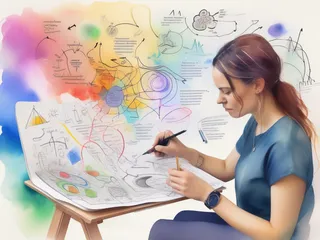
The Scenario: While everyone else is taking notes in text, they're creating elaborate diagrams, mind maps, and visual representations of the discussion. Their notebook looks like an art project.
What it's like to work with them: Doodlers process and express information visually. They often see connections and patterns others miss and can make complex concepts accessible through drawings.
| Strengths | Weaknesses |
|---|---|
| Visual processing reveals new insights | May appear distracted or disengaged |
| Makes complex concepts accessible | Visual style might not resonate with all team members |
| Creates engaging meeting artifacts | Can take time to create polished visuals |
| Sees patterns and connections | Might focus on format over content |
Scrum Master Strategy:
- Provide visual tools: Whiteboards, sticky notes, digital drawing tools
- Encourage sharing: "Can you show us how you're visualizing this?"
- Use their outputs: Digital copies of their diagrams for team reference
- Pair with verbalists: Combine visual and verbal communication styles
- Create visual spaces: Use tools like Miro or Mural for collaborative drawing
12. The Innovator

The Scenario: Every problem has a technological solution. "We should try this new AI tool for sprint planning!" or "I found this automation script that could optimize our workflow."
What it's like to work with them: Innovators bring innovation and efficiency through tools. They're often early adopters who can streamline processes and solve technical challenges. They might focus too much on tools over outcomes.
| Strengths | Weaknesses |
|---|---|
| Brings innovation and efficiency | May prioritize tools over goals |
| Excellent problem-solving with technology | Can overwhelm team with too many new tools |
| Often early adopter of useful solutions | Might neglect human/process factors |
| Can automate repetitive tasks | Could create tool complexity without clear benefit |
Scrum Master Strategy:
- Evaluate impact: "How would this tool improve our team outcomes?"
- Pilot before adoption: Test new tools with small experiments
- Focus on problems first: "What problem are we trying to solve?"
- Include the team: Get buy-in before implementing new tools
- Leverage their expertise: Have them research and recommend tools for specific challenges
13. The Devil's Advocate
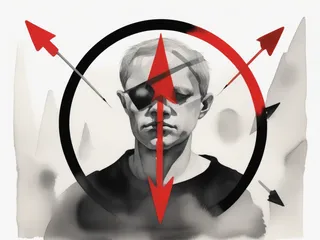
The Scenario: The team reaches consensus on an approach, and they immediately say, "Well, what if we're completely wrong about this?" They argue the opposite position just to test the decision.
What it's like to work with them: Devil's advocates ensure thorough exploration of decisions. They prevent groupthink and strengthen arguments by challenging them. They can be exhausting if overused.
| Strengths | Weaknesses |
|---|---|
| Prevents groupthink and weak decisions | Can be exhausting and frustrating |
| Ensures thorough exploration of options | May delay decisions unnecessarily |
| Strengthens arguments through challenge | Can appear argumentative or negative |
| Identifies blind spots in reasoning | Might challenge for the sake of challenging |
Scrum Master Strategy:
- Use strategically: "Let's have someone argue the opposite position"
- Time-box challenges: Limit devil's advocate time to prevent exhaustion
- Rotate the role: Don't let one person always be the contrarian
- Focus on strengthening: "How does this challenge make our decision better?"
- Acknowledge value: "Thanks for helping us stress-test this idea"
14. The Mediator

The Scenario: When tensions rise between team members or disagreements get heated, they naturally step in with, "I think I see both perspectives here..." They help find common ground and de-escalate conflicts.
What it's like to work with them: Mediators are your secret weapon for team harmony. They sense emotional undercurrents, build bridges between opposing viewpoints, and help maintain psychological safety. They're absolutely invaluable.
| Strengths | Weaknesses |
|---|---|
| Maintains team harmony and psychological safety | May avoid necessary conflicts |
| Excellent at finding common ground | Could suppress important disagreements |
| Reads emotional undercurrents well | Might take on too much emotional burden |
| Helps de-escalate tensions | Can be overwhelmed by team conflicts |
Scrum Master Strategy:
- Partner with them: Work together on team dynamics
- Recognize their contributions: "Thank you for helping us find common ground"
- Support their wellbeing: Check that they're not carrying too much emotional load
- Develop their skills: Help them learn when conflict is productive
- Share the load: Don't let them become the only emotional caretaker
Working with Mixed Personality Teams
The real magic happens when you understand how these personalities interact:
Powerful Combinations:
- Analyst + Dreamer: Data-driven innovation
- Skeptic + Optimist: Realistic planning with positive outlook
- Vocal + Watcher: Natural mentoring relationships
- Timekeeper + Storyteller: Efficient meetings with rich context
Potential Conflicts:
- Interruptor + Watcher: The quiet ones get silenced
- Realist + Optimist: Constant tension over outlook
- Innovator + Analyst: Tool paralysis from over-analysis
- Devil's Advocate + Everyone: Exhaustion from constant challenge
Practical Facilitation Strategies
Meeting Design
- Opening rounds: Get input from Watchers before Vocals dominate
- Time boxes: Satisfy Timekeepers while allowing for deep discussion
- Visual elements: Engage Doodlers and make concepts accessible
- Data preparation: Have metrics ready for Analysts
Conflict Resolution
- Use Mediators: Let them help find common ground
- Separate exploration from decision: Satisfy Devil's Advocates without endless debate
- Address Realist concerns: Create space for risk discussion
- Channel Optimist energy: Use them to maintain morale during difficult conversations
Decision Making
- Gather input systematically: Ensure Watchers contribute
- Provide data: Support Analysts' need for evidence
- Test assumptions: Use Skeptics and Devil's Advocates strategically
- Visualize options: Help Doodlers and visual thinkers participate
Building Your Personality Radar
As a Scrum Master, developing your ability to quickly identify these personality types becomes a superpower. Here's what to watch for:
In the first week:
- Who speaks first, last, or not at all?
- Who asks questions vs. who provides answers?
- Who looks at their phone/watch during meetings?
- Who takes notes visually vs. textually?
Over the first month:
- What patterns emerge in their contributions?
- How do they respond to conflict or disagreement?
- What energizes vs. drains each person?
- Who naturally gravitates toward which roles?
Key Takeaways for Scrum Masters
- Every personality is a gift: The goal isn't to change people but to orchestrate their natural tendencies
- Diversity drives innovation: Teams with varied personality types make better decisions and solve problems more creatively
- Facilitation is orchestration: Your job is conducting the symphony, not playing every instrument
- Context matters: The same personality trait can be a strength or weakness depending on the situation
- Adapt your style: Great Scrum Masters adjust their facilitation approach based on team composition
The Bottom Line
Understanding these 14 personality types isn't about putting people in boxes—it's about unlocking the unique value each person brings to your team. The Watcher's insights, the Energizer's energy, the Skeptic's risk awareness, and the Mediator's harmony all contribute to a stronger, more effective agile team.
Your role as Scrum Master isn't to eliminate these differences but to create an environment where each personality type can contribute their best work. When you master this, you'll find that your "difficult" team members become your most valuable assets.
Every personality trait is indeed a gift. Great Scrum Masters know when and how to unwrap each one.


